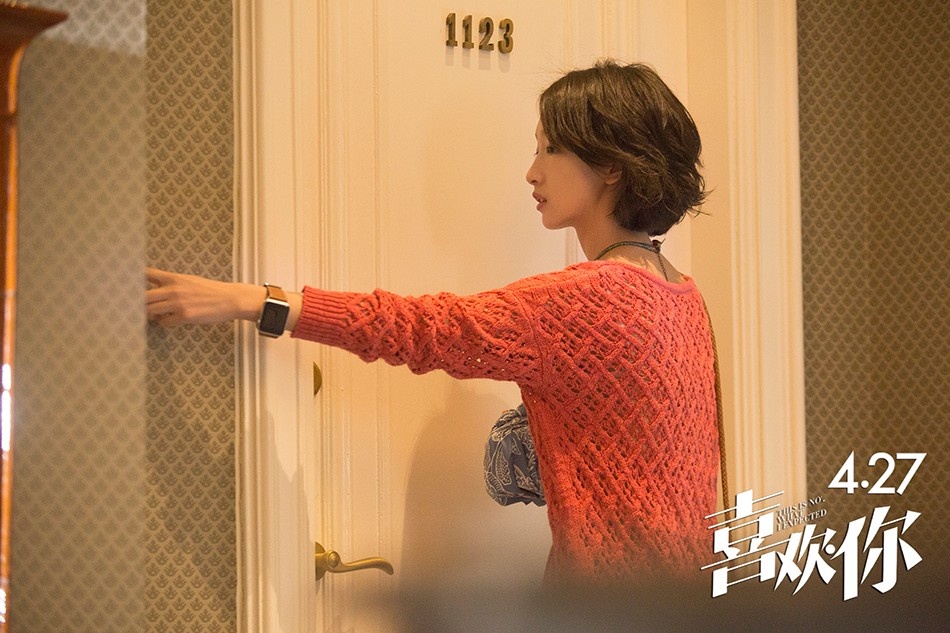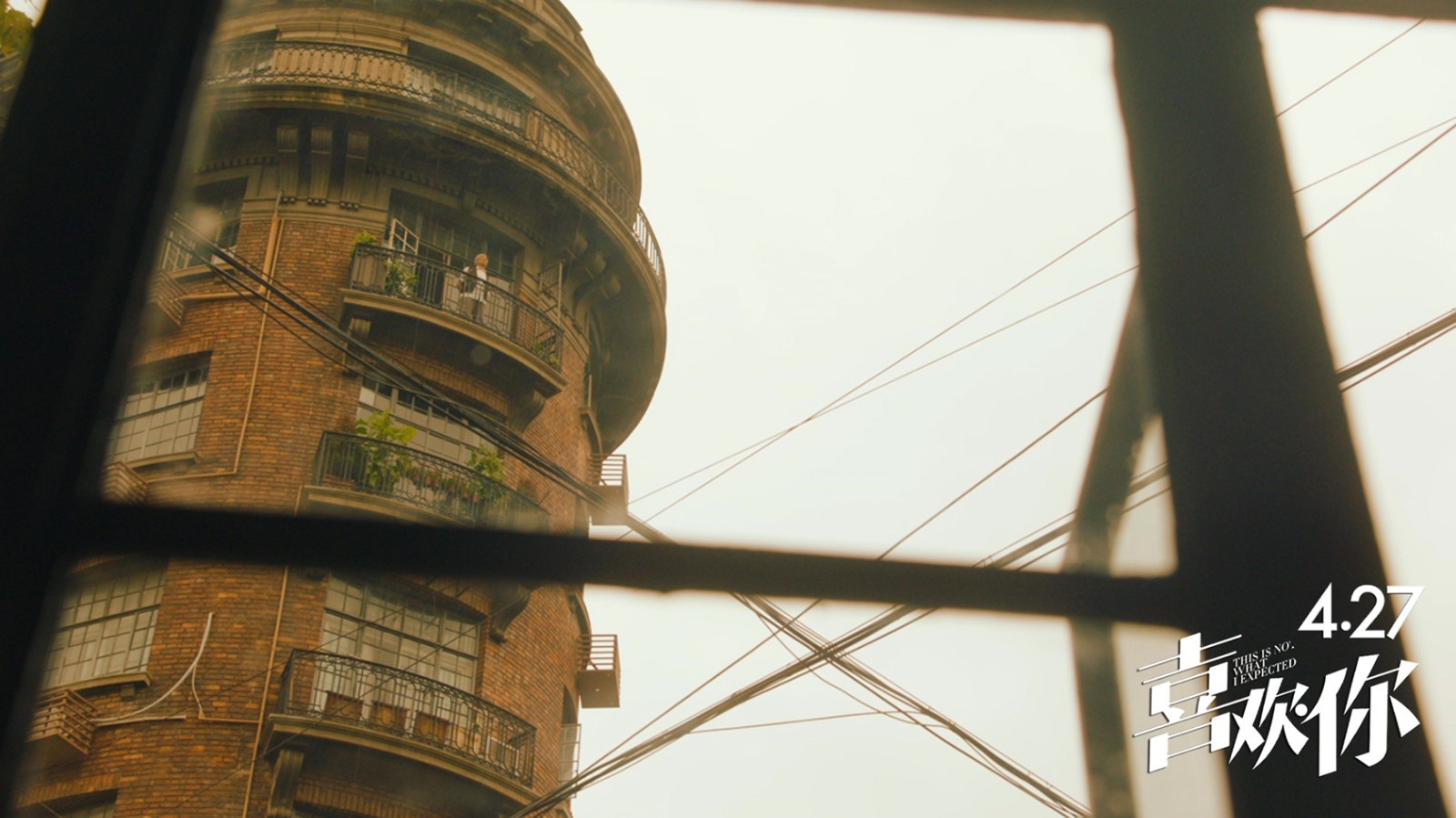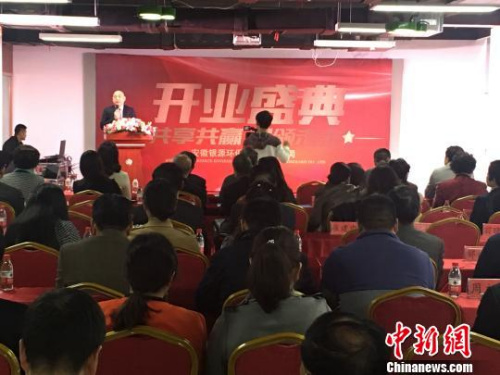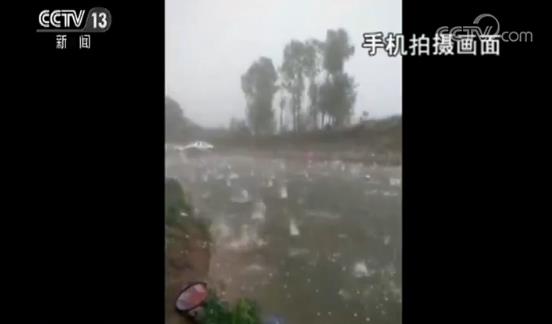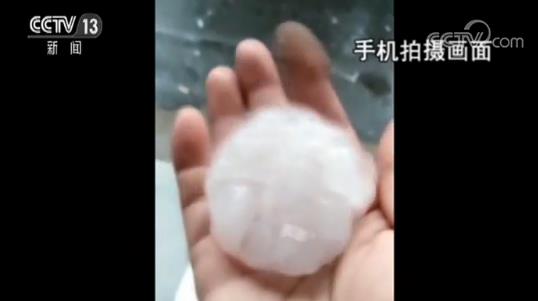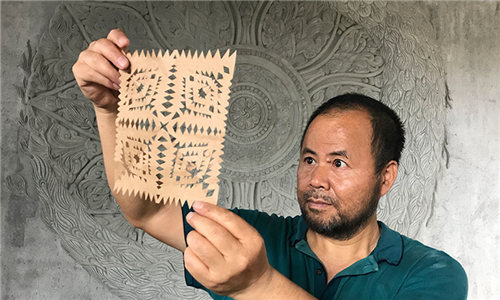Shaanxi Higher People’s Court filed a case for review. The complainant has been released from prison for raping and killing a young girl 25 years ago.
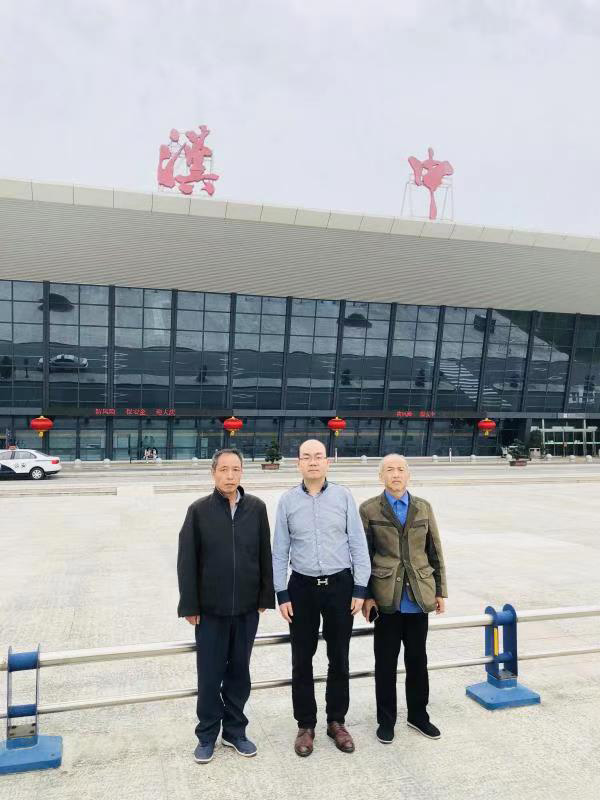
Lu Tianhui (first from the right) and his complaint agent Deng Xueping (middle) took a group photo with the interviewee.
Lu Tianhui, a man from Hanzhong, Shaanxi Province, was sentenced to life imprisonment because he was found to be the murderer of a young girl case 25 years ago. After commutation, he was released in January this year after more than 24 years in prison.
After being released from prison, 55-year-old Lu Tianhui complained that he was not the murderer. On October 16th, The Paper learned from the relevant staff of Shaanxi Higher People’s Court that the court has initiated a case review of Lu Tianhui’s case, and it is not convenient to disclose the latest progress of the review.
Many years ago, when the case was opened in the first instance, Lu Tianhui, who had made a guilty confession to the police, retracted his confession in court. Before the verdict was pronounced in the first instance, Hanzhong Intermediate People’s Court sent the case back for supplementary investigation four times, demanding to eliminate multiple doubts. The fourth decision on returning the investigation stated that "after many times of returning the investigation, the facts of this case were unclear and the evidence was insufficient", and there were many doubts and there was no statutory case.
The police issued a number of "Notes" in this regard, and the case was finally decided. On May 21, 1999, after Lu Tianhui was detained for more than four years, Hanzhong Intermediate People’s Court pronounced the sentence in the first instance, and found Lu Tianhui guilty of intentional homicide and rape of a young girl, and sentenced him to life imprisonment. After Lu Tianhui appealed, the Shaanxi High Court made a final ruling in September of the same year and upheld the original judgment.
The Paper noted that in the judgment of the first instance, the defender believed that Lu Tianhui was found guilty of adultery and murder of a young girl, based on indirect evidence such as on-site inquest and criminal scientific and technical appraisal, and suggested that the court should impose appropriate punishment. Hanzhong Intermediate People’s Court held that "the defender’s defense opinions can be adopted."
Deng Xueping, Lu Tianhui’s appeal attorney, told The Paper after consulting the case file that there were many doubts in the case, and the most important thing was that the key evidence for finalizing the case was only blood group identification, and the result was not exclusive.
According to the file data, in June 2004, due to Lu Tianhui’s complaint, Hanzhong Intermediate People’s Court filed a case for review. Yajun Gao, then the director of Sujiaying Police Station who handled the case, said in a telephone inquiry during the review of Hanzhong Intermediate People’s Court that the important evidence of Lu Tianhui’s case was blood, "blood proved that he killed the little girl". Five months after the investigation, Hanzhong Intermediate People’s Court decided to reject the complaint.
The police locked the suspect by blood type identification.
At 10 o’clock on the morning of September 4, 1994, the police of Hedongdian Police Station in Hantai District, Hanzhong City, Shaanxi Province received a report from the masses that a woman’s body was found in a paddy field by two groups of villagers in Hongqi Village, Hedongdian Town one day ago. When it was found, it was highly decomposed, leaving only the skeleton.
The villagers remembered that more than 20 days ago, Lu Cun, a villager in the neighboring Quluying village, reported to the police that her only daughter Lu Li (a pseudonym) was missing. Lu Cun said in the missing report that on August 8, 1994, he and his wife went out to work, leaving his daughter to write at home. When he came home at noon, his daughter was gone. Until seven o’clock that night, Lu Li still didn’t go home. He and his wife began to look around.
After the family members identified the clothes worn by the bones and compared them with the blood type, the police determined that the deceased was 10-year-old Lu Li. The Paper noticed that there was no DNA identification report on the identity of the female corpse and other evidence in the existing case files, and it was not mentioned in the list of evidence listed in the judgment.
The autopsy report showed that the bone color of Luli’s right eyebrow arch, under the nasal bone and pubic symphysis became darker, which proved that she had suffered blunt injury before her death, but the cause of death could not be determined because of the high corruption of the body.
The police once investigated many male villagers in the same village, but it was fruitless. Lu Tianhui, a young man living alone in the straw house of Changtan Forest Farm on the bank of Baohe River, caught the attention of the case handlers. The straw house is not far from where the body was found. The police found suspicious blood on the doorframe, brick pier, pillow and white shirt of Lu Tianhui’s residence. During the search, the police also found several obscene books and diaries with women’s names on them. Later, all these became evidence and appeared in several judgments in this case.
Lu Tianhui told The Paper that he left home and lived alone because he and his mother were unhappy about family affairs, and at that time he often sifted sand on the river Bao during the day before moving to the thatched cottage. On the night of the murder, he went to the village accountant’s home to issue a remittance certificate. When he returned to the hut, it was past nine o’clock. After reading for a while, he fell asleep. He said that the white shirt found by the police was an old one he didn’t wear. It had not been washed for several months, and it was usually used to cover the quilt to prevent dust.
The blood test certificate issued by HanzhONg Public Security Bureau on October 6, 1994 shows that the blood on the door frame and Lu Tianhui’s white shirt is ON type, which is the same as Lu Li’s hair and bone blood type, while Lu Tianhui’s blood type is AMN type.
On October 15th of the same year, the police formally detained Lu Tianhui. The only notice of arrest on file shows that Lu Tianhui was taken away by the police for questioning on September 16, and in the following 30 days, the Hantai Branch made a total of nine transcripts. Deng Xueping believes that this does not comply with the provisions of the Criminal Procedure Law that "the maximum duration of summons and detention shall not exceed 12 hours".
According to the investigation report, Lu Tianhui confessed the whole process of raping and killing Lu Li under the strong offensive of "repeated policy education" and "putting facts and reasoning" by the police. On October 22, Lu Tianhui was arrested by Hanzhong Public Security Hantai Branch for intentional homicide and rape.
After the court returned the investigation for four times, the defendant was sentenced to life.
In December 1994, Hanzhong City Procuratorate sued the case to Hanzhong Intermediate People’s Court, and in the following five years, Hanzhong Intermediate People’s Court returned the case for supplementary investigation four times.
According to the four return letters in the case file, the court asked for supplementary investigation on the cause of Lu Li’s death, how the blood on the white shirt was formed, the process of blood extraction, whether there was a confession by torture, the possibility of excluding others from committing crimes and the evidence to confirm the facts of adultery. On November 24, 1998, Hanzhong Intermediate People’s Court made a decision to withdraw the investigation for the fourth time, saying that "after repeated withdrawals, the facts of this case were unclear and the evidence was insufficient", and there were many doubts and there was no statutory case. In this regard, the police issued a number of "Notes".
On September 21, 1995, when the first trial of the case was held, Lu Tianhui retracted his confession in court, claiming that the guilty confession was made at the instigation of the case-handling personnel. After Lu Tianhui was detained for more than four years, on May 21, 1999, Hanzhong Intermediate People’s Court sentenced Lu Tianhui to life imprisonment for intentional homicide, 15 years imprisonment for adultery with a young girl, combined punishment for both crimes, and combined execution of life imprisonment.
The judgment found that at 8: 00 pm on August 8, 1994, Lu Tianhui rode back to her residence and went to Doumen, Gaoyan. When she met Lu Li walking independently, she tricked her into a depression outside an old pumping station in Quluying Village Forest Farm and raped her. For fear of being exposed, Lu Tianhui covered Lu Li’s mouth with his left hand, pinched her neck with his right hand, kneeled her abdomen with her knees, and slammed a cement block on her forehead to death. After the murder, Lu Tianhui wrapped the body in a plastic woven bag, moved it to the rice field 150 meters away, pulled out some rice by hand, dug the pit by hand and buried the body, and then replanted the pulled rice.
The Paper noted that in the list of physical evidence shown in the judgment, the cement block of the murder weapon and the woven bag of the corpse removal tool were not included. According to the file data, the police handling the case gave an explanation in October of the year of the incident, saying that the investigator "has not found it after more than two hours of serious search", and this handwritten case description was not stamped with the official seal.
In addition to the confession, the most important evidence of the verdict is blood group identification. Deng Xueping, Lu Tianhui’s complaint agent, pointed out that according to the case file, the case-handling unit never extracted DNA from the bones, nor did it conduct DNA identification. Under this circumstance, it was impossible to confirm that the blood on Lu Tianhui’s white shirt and door frame came from Lu Li. "Blood type identification is not exclusive, and there is no direct evidence to prove that Lu Tianhui killed people."
The Paper noted that the article "DNA identification technology and its application in criminal investigation" in the fourth issue of "China Judicial Appraisal" in 2007 recorded that since 1993, DNA identification technology has been widely used in criminal investigation in China.
In June 1999, Lu Tianhui appealed because he refused to accept the judgment of the first instance. Three months later, the Shaanxi High Court made a final ruling, rejected his appeal application and upheld the original judgment.
The Paper noted that in the defense opinions of the defenders of the first instance recorded in the judgment, it was mentioned that "the court was advised to impose appropriate punishment" on the grounds that Lu Tianhui was guilty of adultery and murder of a young girl, which was based on indirect evidence such as on-site inspection and criminal scientific and technical appraisal. Hanzhong Intermediate People’s Court held that "the defense opinions of defenders can be adopted."
Deng Xueping believes that in the case that Lu Tianhui refused to plead guilty and repent and did not make any financial compensation, the sentence of combined punishment for two crimes was indefinite, "there is room for it."
There is a big difference in the comparison data of footprints. The police said that they could not find similar conditions.
The Paper noted that out of the nine transcripts made by Lu Tianhui to the police, there were two confessions of innocence and seven confessions of guilt. The first guilty confession was made on September 26, the tenth day after Lu Tianhui was arrested, and just one day later, Lu Tianhui made another innocent confession. In its seven guilty confessions, there are inconsistencies in the victim’s dress, his own dress, tools for committing crimes, the killing process, and the time of taking the tools for throwing the body.
Lu Tianhui told The Paper that during the interrogation, he was tortured to extract a confession. Today, he still has two crimson scars on his calves.
In the first instance of this case, Hanzhong Intermediate People’s Court also investigated whether there was a confession by torture, and Hantai Branch and investigators issued two written certificates to deny it.
When Hanzhong Intermediate People’s Court sent the case back to the procuratorate for supplementary investigation for the fourth time, it asked Hantai Public Security Bureau to explain whether to compare the data of "Chengtangjiaowo" extracted during the investigation with that of Lu Tianhui. Hantai Branch issued a "Description" to the court five years after the case was detected, saying that "because the time, space and place that coincided with the original scene could not be found at that time, the measurement data were quite different".
According to the "Description", the foot fossa found during the on-site investigation of the bones was 6 cm deep and 23 cm long, and the stride was 87 cm, while Lu Tianhui’s foot was 23.5 cm long. He was carrying stones equal to Lu Li’s weight, and the stride obtained after simulating barefoot natural walking twice in the sediment field near the original site was far less than 87 cm, namely: the first step: the left stride was 77 cm, 77 cm, 78 cm, and the right stride was 79. The second pass: the left step is 60 cm, 57 cm and 61 cm, and the right step is 65 cm, 61 cm and 63 cm.
Deng Xueping therefore believes that the public security organs did not transfer the data that might prove Lu Tianhui’s innocence or light crime to the procuratorate for the first time.
After being released from prison, he appealed and the Shaanxi High Court filed a case for review.
In June 2004, due to Lu Tianhui’s persistent complaint, Hanzhong Intermediate People’s Court filed a case for review. According to the case file, when the organizer revisited the site on July 26 of that year, he personally went to the field to test and simulate the details of "pulling rice by hand". However, the conclusion was that after a night of heavy rain, the soil in the field was still hard, and the two feet stood on the mud, and they could only step down to the arch of the foot, or they could only step down to the outer edge of the back of the foot. Because the rice grew to a late stage and the roots were deep, the organizer could not pull rice by hand at all.
Five months after the investigation, Hanzhong Intermediate People’s Court decided to reject the appeal. According to the case file, Yajun Gao, then the director of Sujiaying Police Station, said in a telephone inquiry during the reexamination of Hanzhong Intermediate People’s Court that the important evidence of Lu Tianhui’s case was blood, "blood proved that he killed the little girl".
On October 18th this year, The Paper tried to contact Yajun Gao by telephone, but got no response.
In January this year, after three commutes, after being detained for more than 24 years, Lu Tianhui was released from prison. He returned to his hometown to live with his mother and still insisted on appealing for himself.
Lu Tianhui told The Paper that his father died young. As the eldest son of his family, he went home to farm after graduating from high school. At that time, his relatives used to act as matchmakers for him, but he couldn’t make it because of financial difficulties.
On October 16th, The Paper learned from Shaanxi Higher People’s Court that the court had initiated a case review of Lu Tianhui’s case, and the relevant staff said that it was not convenient to disclose the latest progress of the review. (Reporter Wei Jiaming)
